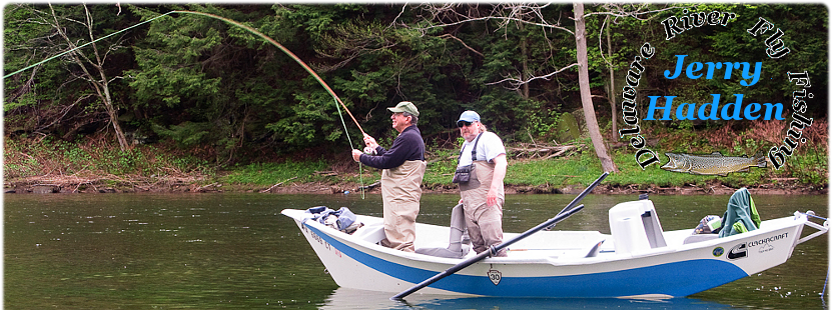
Epeorus pleuralis
Quill Gordons
Jerry Hadden

The days begin to warm as winter finally starts to give way to early spring, a few warm sunny days and Epeorus pleuralis nymph begin to become active. The river is still running high and cold, but finally in mid April duns begin to appear. At first it begins slowly, in the middle of the afternoon and lasts for an hour or so. From this point it only takes one good warm day to get Quill Gordons hatching in great numbers. Hatch activity is still limited to mid afternoon, and only lasts for two or three hours, the up side once it starts it doesn't stop, even if the air temperature drops back into the high 30's - low 40's. I've seen great hatches of Epeorus pleuralis in heavy snow flurries. Two of the better days I've had fishing Quill Gordons, one with air temperature of 38, the other in a heavy spring snow storm.
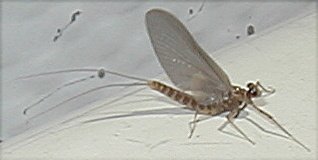
Epeorus pleuralis
Drying it's wings on my boat during a heavy early spring hatch.
Epeorus pleuralis nymphs are very dark gray brown, almost black in color. Epeorus pleuralis nymphs are great clingers preferring fast moving riffles, and require clean pollution free water. Biologists use these nymphs as an indicator of water quality. As these nymph mature they begin migrating to the down stream side of rocks, then shed their husk before swimming to the surface. This type of emergence leave them very vulnerable to fish feeding below the surface, and give the angler a good opportunity to fish wet fly patterns. Good patterns include Lead Winged Coachman, and Quill Gordon Wets size 12 & 14.
Fish these patterns slowly in cold spring.
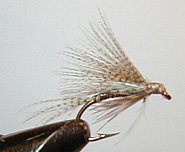
Quill Gordon Wet
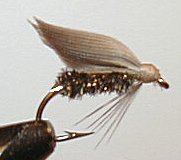
Leadwing Coachman
To imitate emerging Epeorus pleuralis I like to fish wet flies and nymph with a slow sinking line, and very little weight. Casting up and across stream, letting it slowly sink, then swinging back up towards the surface as it travels down stream in the current. Remember to fish it slow hesitate as your line straightens out down stream for a couple of minutes before lifting your rod to make another cast. Make sure that the drag on your reel is set very light, and don't hold the line in your line hand. This will allow trout to sip in your offering with little resistance. Once a fish takes your fly lift your rod with your rod hand only, and let the fly line spool freely from your reel. Using this technique will cut down on short strikes and lost fish.
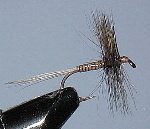
Quill Gordon Dry
This hatch offers very good dry fly fishing as duns float a great distance in the cool (or downright cold) spring weather. Epeorus pleuralis duns are pale olive with a hint of tan., wings are medium dark dun in color. Although Epeorus pleuralis nymphs live in fast riffles, under these conditions. Look for rising fish in quite, slow moving pools, \or up against a bank where the current is slower than mid stream, and insects are served to the trout by the waters flow washing them into small back water lyes.
Spinners are light yellowish tan, with clear wings, and begin to appear during warmer afternoons a few days after the duns. The spinners become active during mid afternoon along with the hatching duns, so taking a good look at what the fish are actually taking from the surface will produce many more hook ups than just guessing.


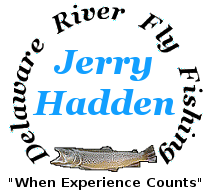 Delaware River Fly Fishing
Delaware River Fly Fishing